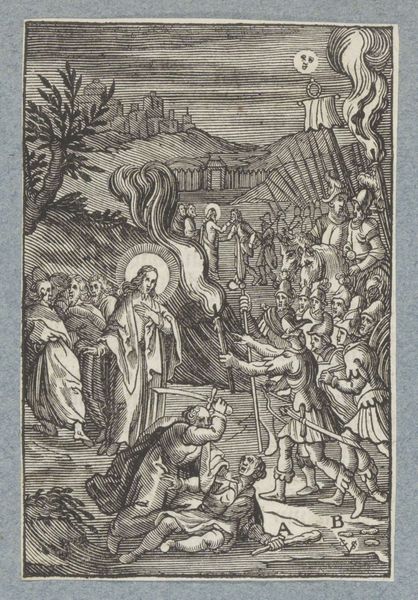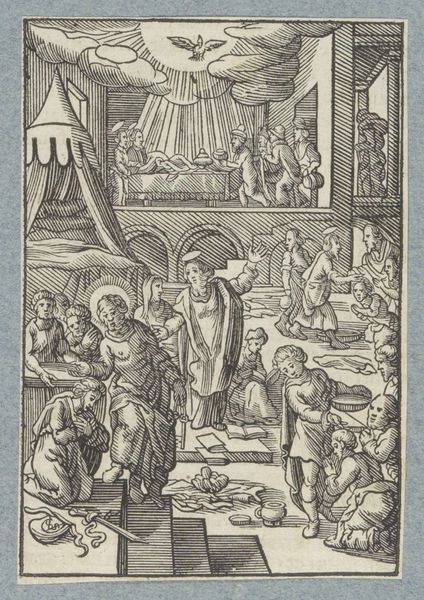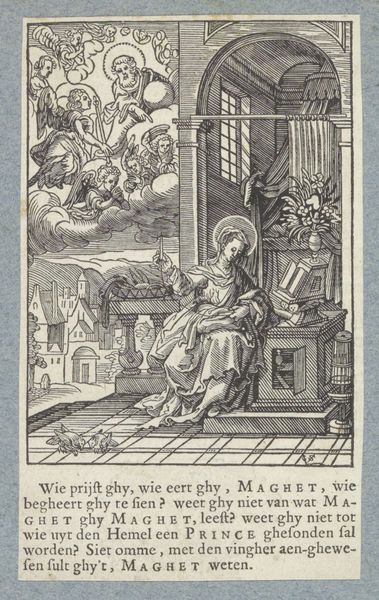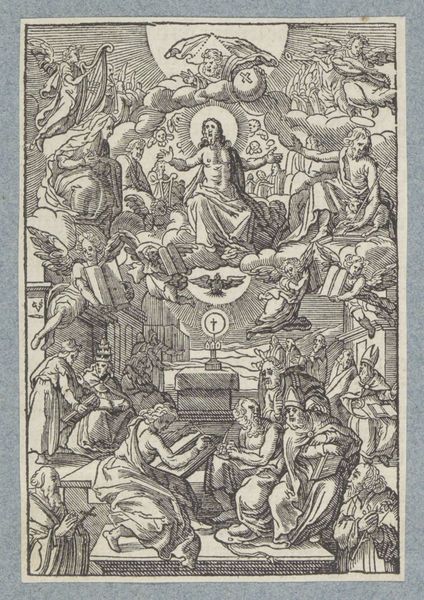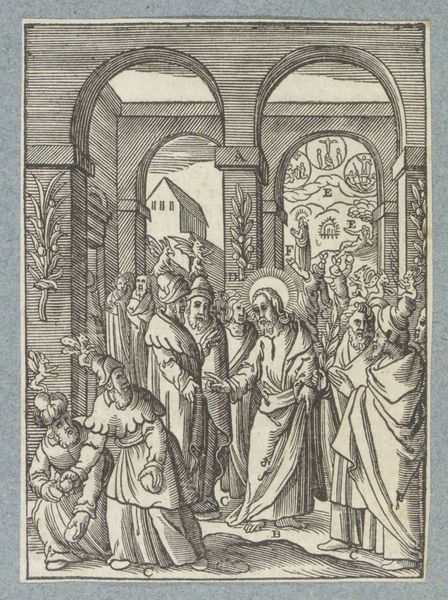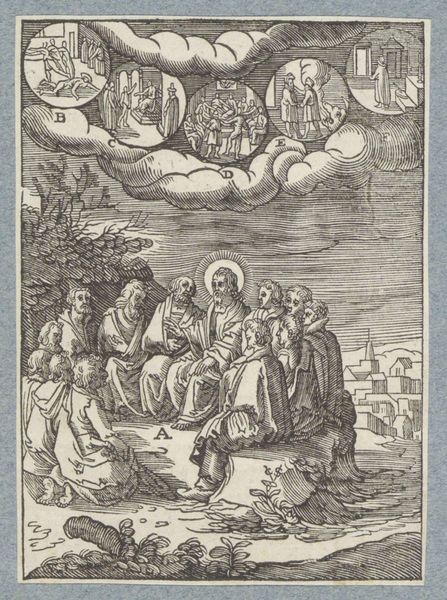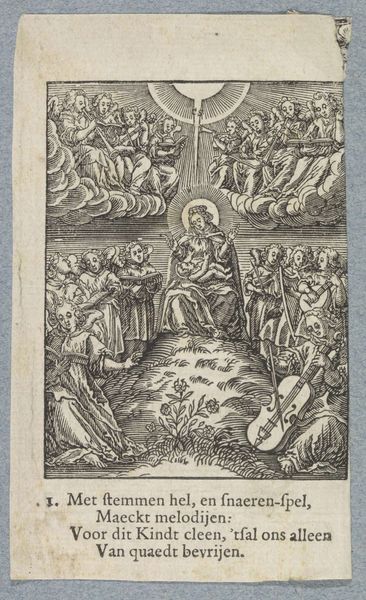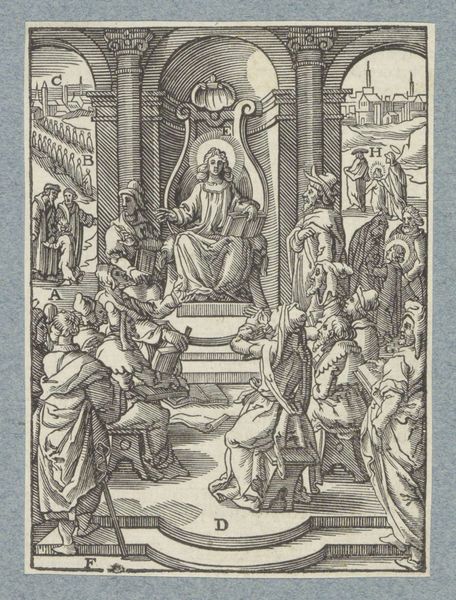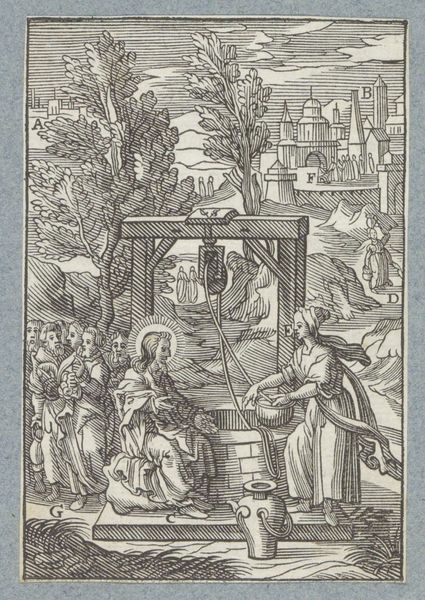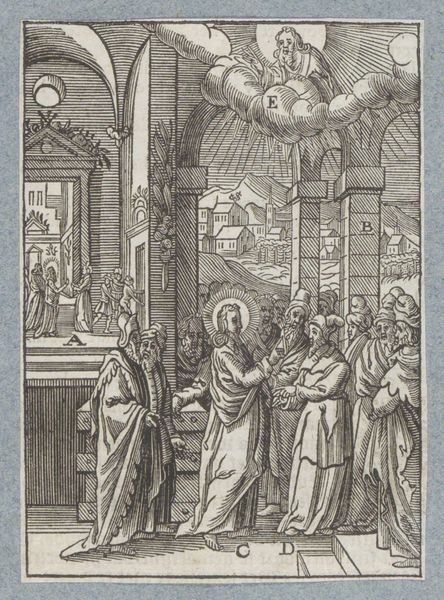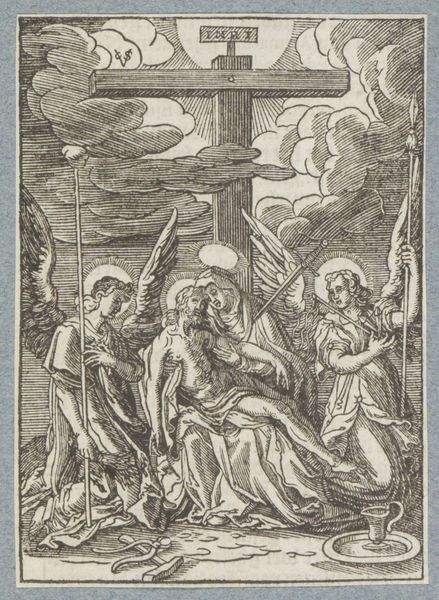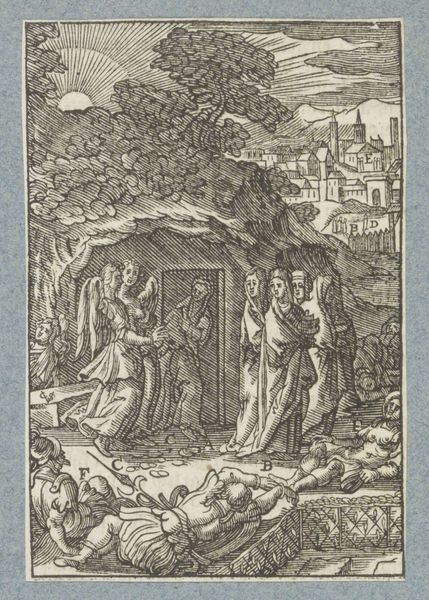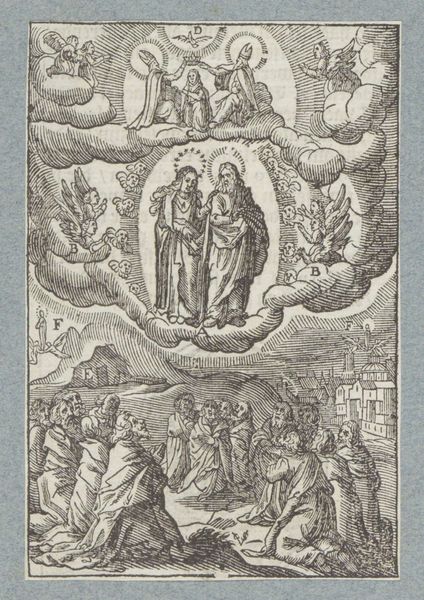
print, engraving
#
medieval
#
baroque
# print
#
old engraving style
#
figuration
#
line
#
history-painting
#
engraving
Dimensions: height 112 mm, width 75 mm, height 138 mm, width 83 mm
Copyright: Rijks Museum: Open Domain
Curator: This engraving by Christoffel van Sichem II, created around 1629, depicts Maria surrounded by music-making angels. The print’s currently housed at the Rijksmuseum. Editor: My first impression is a real sense of industriousness. All those precisely etched lines! It feels meticulous, and weighty in a way that belies its likely small physical scale. The density of figures creates a rather full composition. Curator: It’s fascinating to consider the material conditions surrounding this print. Sichem would have been working within a well-established tradition of printmaking, reliant on highly skilled labor and specific materials – the woodblock, the inks, the paper. It would have circulated within a specific market, reaching a public eager for religious imagery. Editor: Exactly! And that brings up an important element – what role does Maria play in that consumer landscape? It’s key to analyze representations of the divine feminine, exploring how images of Mary, especially in this moment of Baroque extravagance, were deployed to enforce societal ideals and expectations. We also must ask ourselves, were there gendered expectations about how women could be employed as printmakers too, or were these generally made by men like van Sichem? Curator: True. Examining her pose, her lowered gaze – it speaks volumes about the prescribed roles of women in 17th-century society. Even amidst heavenly praise, there is that undercurrent of prescribed female piety, demure conduct, but yet with divine permission and encouragement to celebrate loudly! Editor: The production process itself is crucial to understanding this. Think about the labor invested in each impression. The repetitive action, the precision… it connects to larger questions about artistic skill, labor, and its value. Is such intensive crafting now deemed craft or does the historical placement ensure that it has a cultural position that sees this level of engagement as ‘art’? It would be important to delve into such hierarchies when thinking about devotional art. Curator: It's easy to miss, perhaps, amid all the angelic activity, the two sheets of music hovering mid-scene. They imply a sonic landscape that mirrors the visual abundance, linking the visual experience of this piece to that of the aural one. Editor: Precisely, let's reflect: the materiality of the print anchors it in the real world, the complex history, the consumption patterns. Examining the materials and making makes clear the conditions that influenced the imagery of the music-making, prayer, piety, and grace. Curator: It forces us to interrogate the narratives of religious iconography. Thinking through whose narratives and social structures and roles such historical scenes reinforced, allowed us to have a much better understanding of both their importance and influence within their society.
Comments
No comments
Be the first to comment and join the conversation on the ultimate creative platform.
